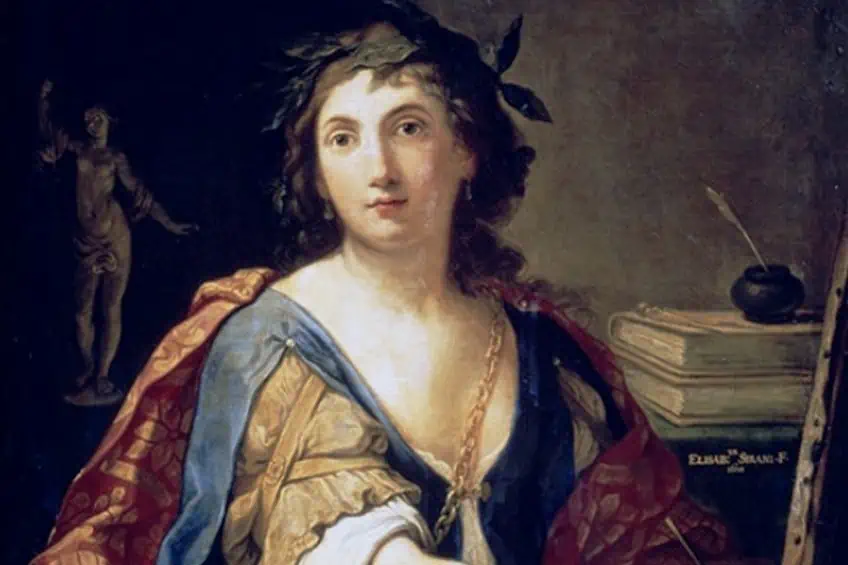Famous Italian Painters – The Top Italian Artists to Know
Italian artists have played a great role in influencing the art world of Europe through the development of various art movements and art styles that emerged through painting. In this article, we will introduce you to the top 15 most famous Italian painters from art history that have shaped major art movements across the Renaissance. Read on for more on these eclectic and studious personalities!
Contents
- 1 An Italian History of Painting
- 2 The Top 15 Most Famous Italian Painters in Art History
- 2.1 Giotto Di Bondone (1267 – 1337)
- 2.2 Duccio di Buoninsegna (1278 – 1318)
- 2.3 Segna di Buonaventura (1298 – 1326/1331)
- 2.4 Giovanni Bellini (1430 – 1516)
- 2.5 Andrea Mantegna (1431 – 1506)
- 2.6 Sandro Botticelli (1445 – 1510)
- 2.7 Leonardo da Vinci (1452 – 1519)
- 2.8 Michelangelo Buonarroti (1475 – 1564)
- 2.9 Giorgione (1477 – 1510)
- 2.10 Raphael (1483 – 1520)
- 2.11 Titian (1488 – 1576)
- 2.12 Caravaggio (1571 – 1610)
- 2.13 Artemisia Gentileschi (1593 – 1656)
- 2.14 Elisabetta Sirani (1638 – 1665)
- 2.15 Andrea Pozzo (1642 – 1709)
- 3 Frequently Asked Questions
An Italian History of Painting
In Italy, artists of the Middle Ages and Renaissance helped propel six major developments in painting that significantly benefited art history and influenced the development of the medium itself. Many great master painters were products of the Renaissance, which was a period in history acknowledged for the rapid development of multiple disciplines, which further impacted the arts.
Italian painting emerged as early as the Roman Empire and can be identified at Italian sites such as Pompeii with the remains of colorful wall paintings. Northern Italy was a hub for Byzantine art, which combined elements of religion, dramatic scenes, realism, and influences from the remnants of the Eastern Roman Empire.
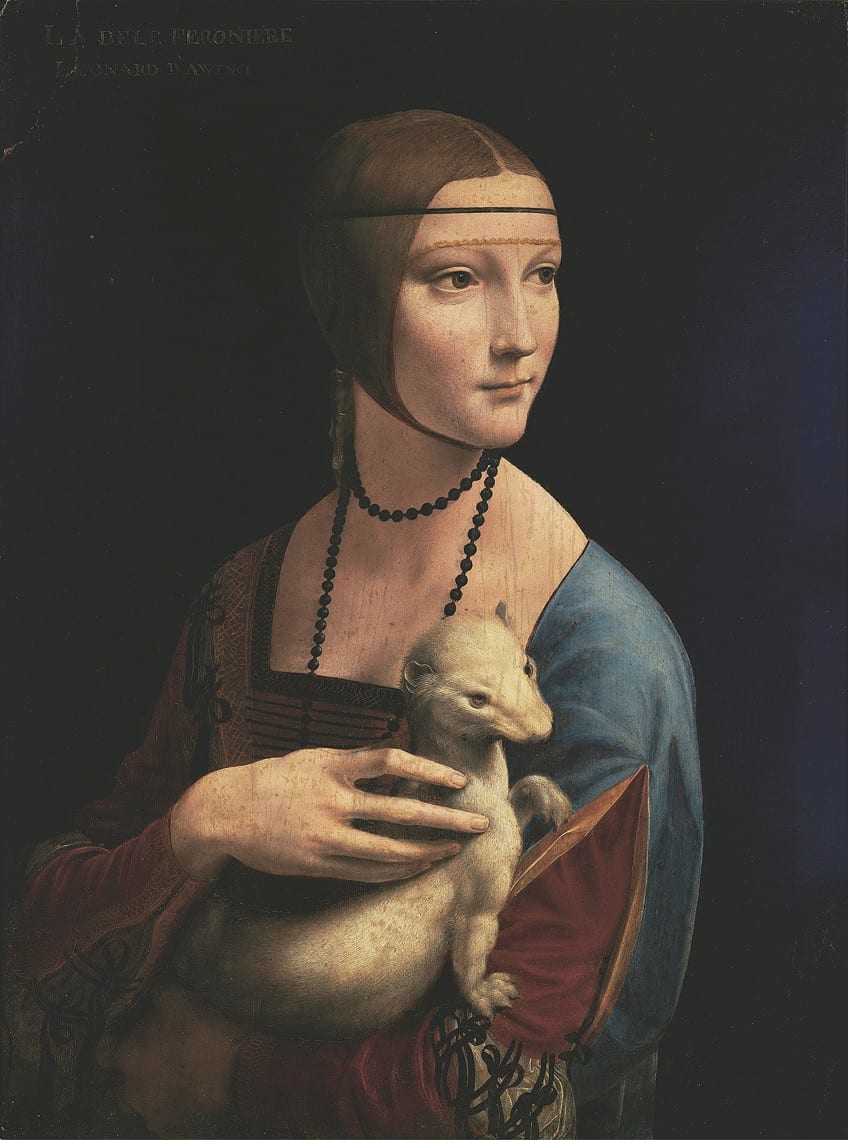
Throughout the Renaissance, Italy was seen as the “birthplace” of art, which produced many famous Italian painters and continued to churn out artists with incredible talent following the introduction of cultural tourism. Popular movements led by Neoclassicism, Baroque painting, Mannerism, and High Renaissance artworks were the essence of Italian painting and were best demonstrated by famous Italian painters like Giotto, Caravaggio, Leonardo da Vinci, and Andrea Pozzo.
The Top 15 Most Famous Italian Painters in Art History
Although the personalities of some of the most renowned Italian artists are questionable, one can still look at their art to gauge the role that the artist plays in the outcome of the artwork and its emerging art style. Now we will take a look at some of the most famous Italian painters who provided us with some of the most exquisite Italian artworks.
Giotto Di Bondone (1267 – 1337)
| Artist Name | Giotto di Bondone |
| Date of Birth | c. 1267 |
| Date of Death | 8 January 1337 |
| Nationality | Italian |
| Movements, Themes, and Styles | Proto-Renaissance, Italian Renaissance, and Late Gothic |
| Mediums | Painting, and frescoes |
| Most Famous Paintings | ● Adoration of the Magi (1305) ● Lamentation (1306) ● Kiss of Judas (1306) ● Ognissanti Madonna (c. 1310) ● Peruzzi Altarpiece (c. 1322) |
Giotto di Bondone is the most famous Italian artist and one of the most talented 13th-century painters of the proto-Renaissance period. Better known as Giotto, the Italian artist was a primary figure in shifting the dominant art style of the 13th century from Byzantine approaches to the introduction of human emotion in figural paintings.
Giotto was a Florence-based artist whose works have influenced many Italian masters.
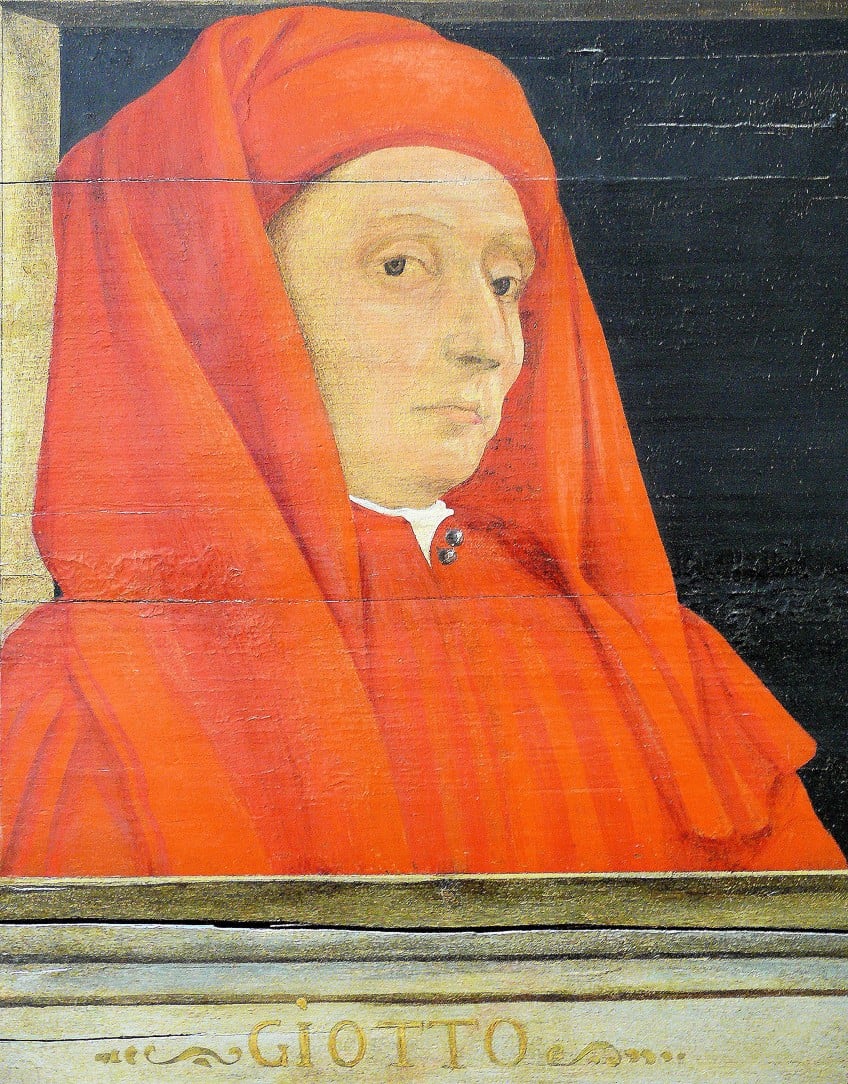
The prodigy was discovered by Giorgio Vasari after Giotto demonstrated incredible talent from an early age without any formal training. Some of Giotto’s most famous Italian Renaissance artworks include the Adoration of the Magi (1305), which portrays an accurate depiction of the comet, historically dubbed as the Star of Bethlehem.
Duccio di Buoninsegna (1278 – 1318)
| Artist Name | Duccio di Buoninsegna |
| Date of Birth | c. Active 1278 |
| Date of Death | 1318 |
| Nationality | Italian |
| Movements, Themes, and Styles | Italian Middle Ages, religious art, and Byzantine |
| Mediums | Painting |
| Most Famous Paintings | ● Rucellai Madonna (1285) ● Madonna and Child (c. 1290 – 1300) ● Maestà (1308 – 1311) |
Duccio di Buoninsegna, also known as Duccio, was a famous Tuscany-based artist who was primarily active between 1278 and his death in 1318. Buoninsegna was one of the most famous early Italian painters who were in incredible demand by government institutions in his time. Buoninsegna contributed to many religious commissions for religious buildings across Italy and is considered to be the most famous painter of the Middle Ages.
Buoninsegna is also credited as a pioneer of the Sienese Gothic style as well as popular painting styles of the 14th century.
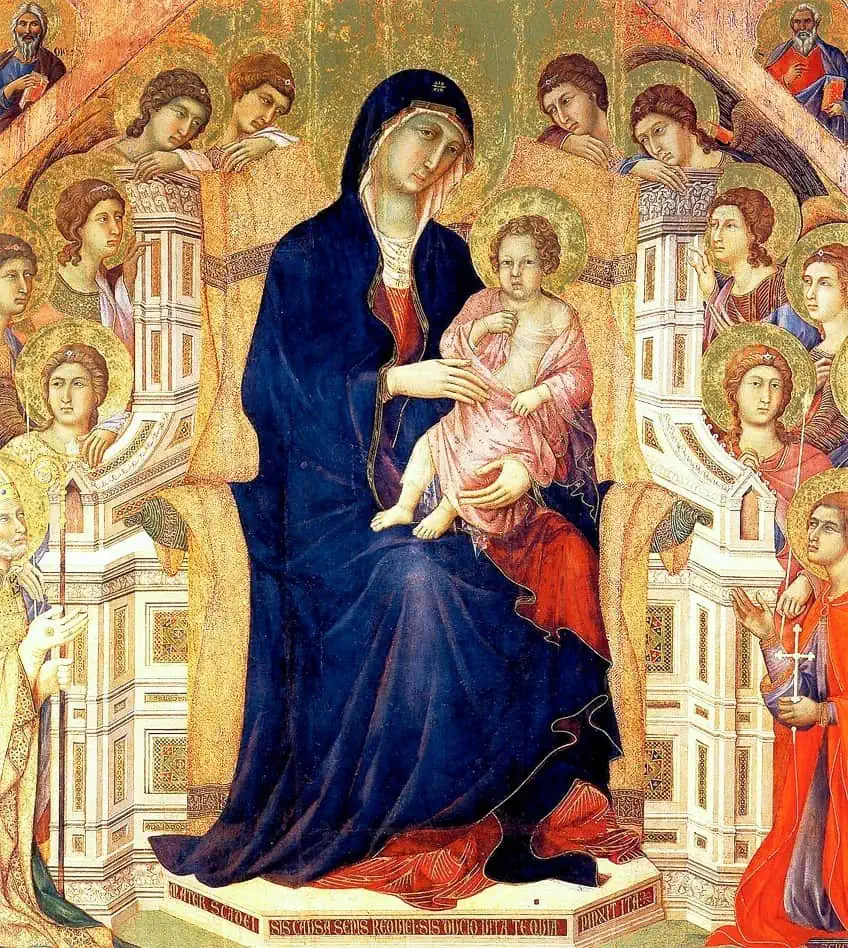
Historical records about Duccio suggest that he was abandoned by his family after he accumulated a few debts and fines and also indicated that the artist had issues managing his life and finances. Duccio’s standard style was led by his approaches, which involved egg-based tempera on wooden panels with gold leaf. Duccio was also one of the few Italian artists who conquered tempera painting and was greatly praised for his precise handling of the medium.
| Artist Name | Segna di Buonaventura |
| Date of Birth | c. Active 1298 |
| Date of Death | 1326 or 1331 |
| Nationality | Italian |
| Movements, Themes, and Styles | Byzantine |
| Mediums | Painting |
| Most Famous Paintings | ● Christ Blessing (c. 1311) ● The Crucifixion (c. 1315) ● Madonna and Child with Nine Angels (c. 1315) ● Saint John the Evangelist (c. 1320) |
Segna di Buonaventura was a famous Italian painter of the proto-Renaissance era who was popular at the Sienese school. Buonaventura’s work is characterized by elegant Byzantine lines with careful selection and blends of colors. Not much is known about the early Italian Renaissance artist other than the fact that both his sons were also later enrolled at the Sienese school and the artist was most active between the years 1298 and 1331. Some of his most notable surviving works include his contributions to the convent of Lecceto in 1317 and a panel painting for the Palazzo Publico.
Buonaventura’s subject matter revolved around religious subjects with many of his works housed in collections by the Metropolitan Museum of Art in New York as well as the Honolulu Museum of Art, among a few other international collections.
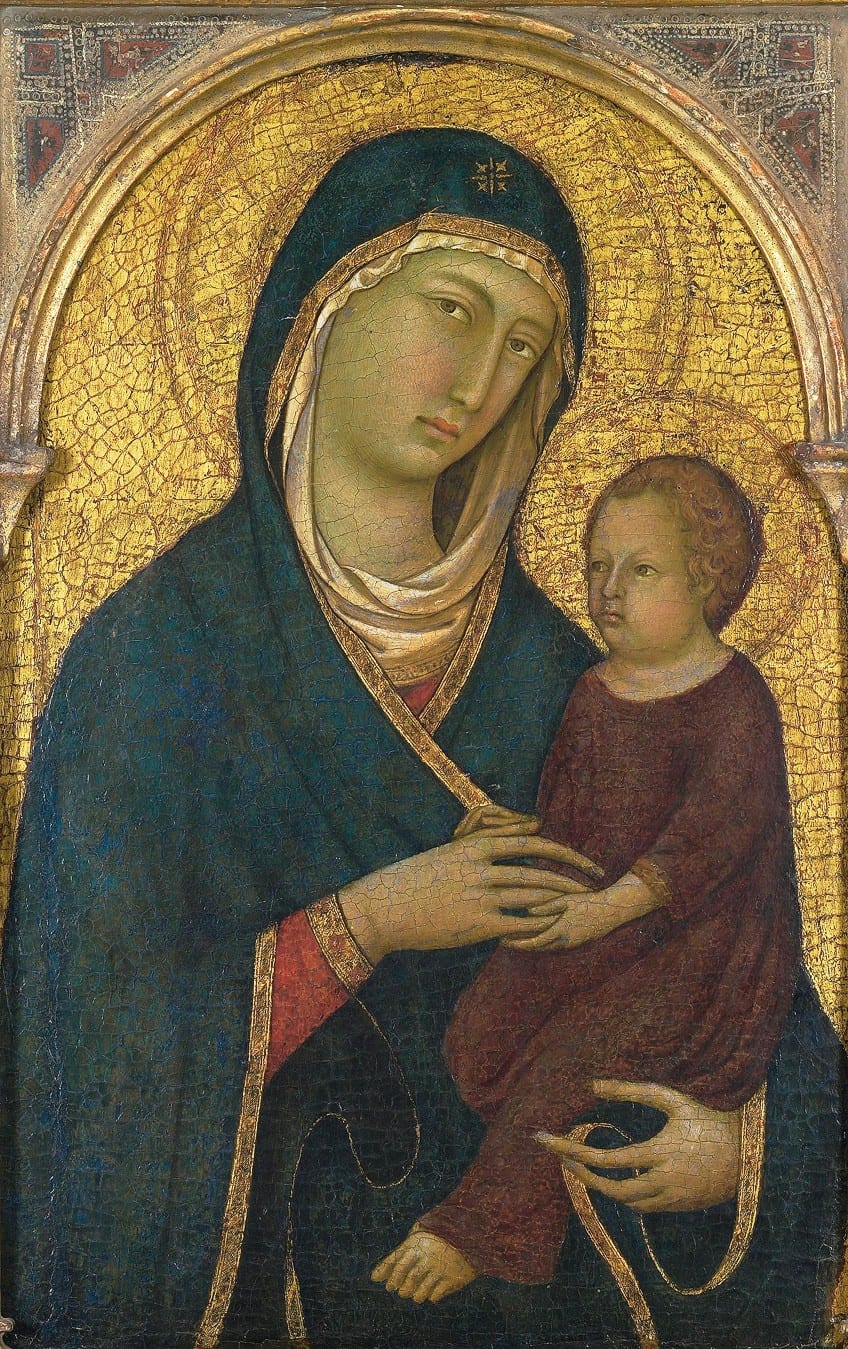
Giovanni Bellini (1430 – 1516)
| Artist Name | Giovanni Bellini |
| Date of Birth | c. 1430 |
| Date of Death | 29 November 1516 |
| Nationality | Italian |
| Movements, Themes, and Styles | Venetian painting, and Italian Renaissance |
| Mediums | Painting |
| Most Famous Paintings | ● Agony in the Garden (1465) ● Madonna del Prato (1505) ● Madonna and Child (1510) ● Drunkenness of Noah (1515) |
Giovanni Bellini was a popular Italian Renaissance painter who thrived during the 15th century and pioneered the genre of Venetian painting. Bellini was raised among artists with his elder brother Gentile Bellini receiving more recognition than Giovanni and his brother-in-law being another renowned painter, Andrea Mantegna. Bellini’s talents were found in the field of Venetian painting, for which he was admired and credited with being a revolutionary agent in influencing the genre to accept more “sensuous and colorist” styles.
Bellini was also an inspirational figure to his later student Titian who drew from his fluency in painting atmospheric landscapes and images with detailed shading.
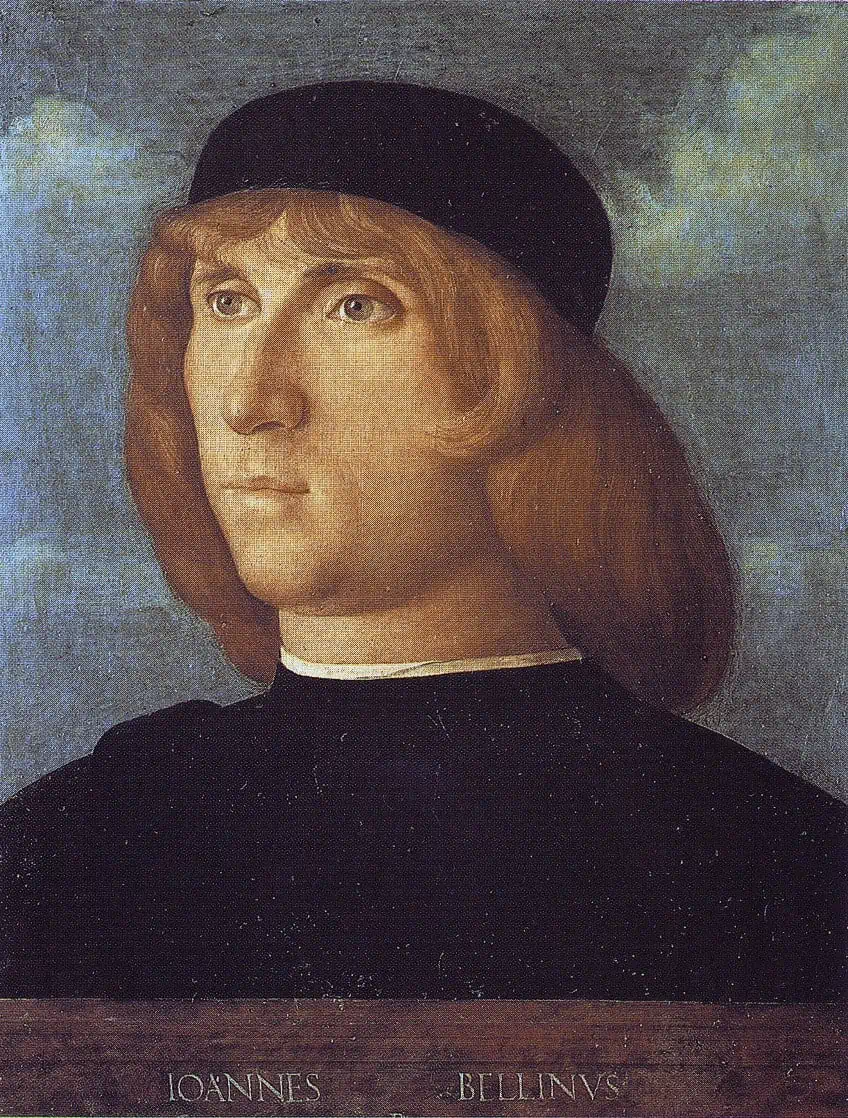
Andrea Mantegna (1431 – 1506)
| Artist Name | Andrea Mantegna |
| Date of Birth | c. 1431 |
| Date of Death | 13 September 1506 |
| Nationality | Italian |
| Movements, Themes, and Styles | Paduan School, and Italian Renaissance |
| Mediums | Painting |
| Most Famous Paintings | ● Agony in the Garden (1458 – 1460) ● San Sebastian (1480) ● Lamentation of Christ (1480) ● Parnassus (1497) |
Andrea Mantegna was perhaps one of the most popular and influential Italian Renaissance artists of his time, who was also a keen learner of Roman archaeology. Mantegna’s father-in-law was the famed Renaissance painter Jacopo Bellini who pioneered the greater art style of Northern Italy. Mantegna was not afraid to experiment with art, which was reflected in his work. He incorporated visual elements of sculpture through his “stone-like” figures and played with perspective techniques by lowering the horizon in his paintings and evoking a sense of monumentality.
Mantegna was also the proud owner of a leading print workshop that operated in 13th-century Venice.
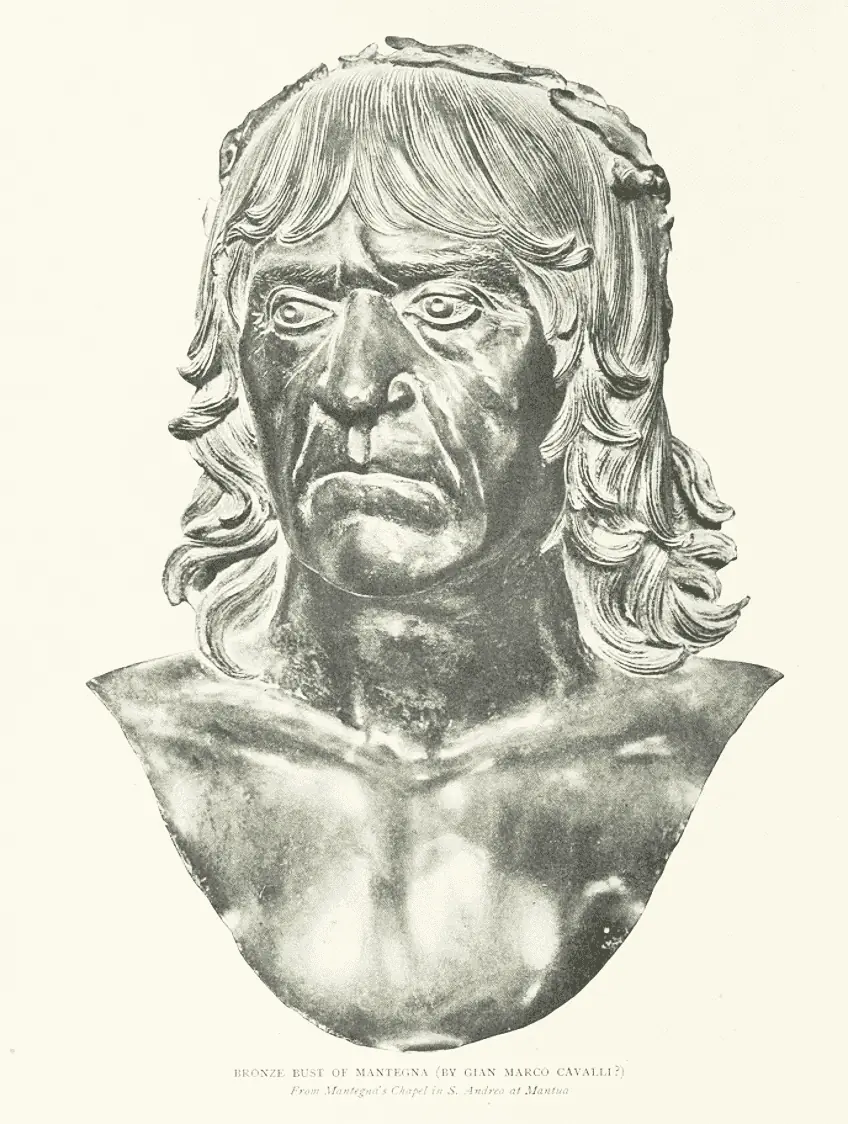
Sandro Botticelli (1445 – 1510)
| Artist Name | Alessandro di Mariano di Vanni Filipepi (also known as Sandro Botticelli) |
| Date of Birth | c. 1445 |
| Date of Death | 17 May 1510 |
| Nationality | Italian |
| Movements, Themes, and Styles | Florentine painting, High Renaissance, and Italian Renaissance |
| Mediums | Painting |
| Most Famous Paintings | ● Primavera (1482) ● Mars and Venus (1483) ● The Birth of Venus (1486) ● The Mystical Nativity (1501) |
Another famous artist who was invited to showcase his talents at the Sistine Chapel was Sandro Botticelli, who is most famous for his painting, The Birth of Venus (1486). Botticelli specialized in many religious and mythology-based Renaissance paintings, which demonstrated his skill in the Early Renaissance Gothic style. In Renaissance Italy, artists relied on the patronage of prominent societal figures to support their careers.
Botticelli’s career took a hit toward the latter stages after his affiliation with the Medici family who stopped his patronage. Despite the decline in his career, Botticelli still left us with some of the most well-recognized Italian paintings, including Primavera (1482) and The Mystical Nativity (1501).
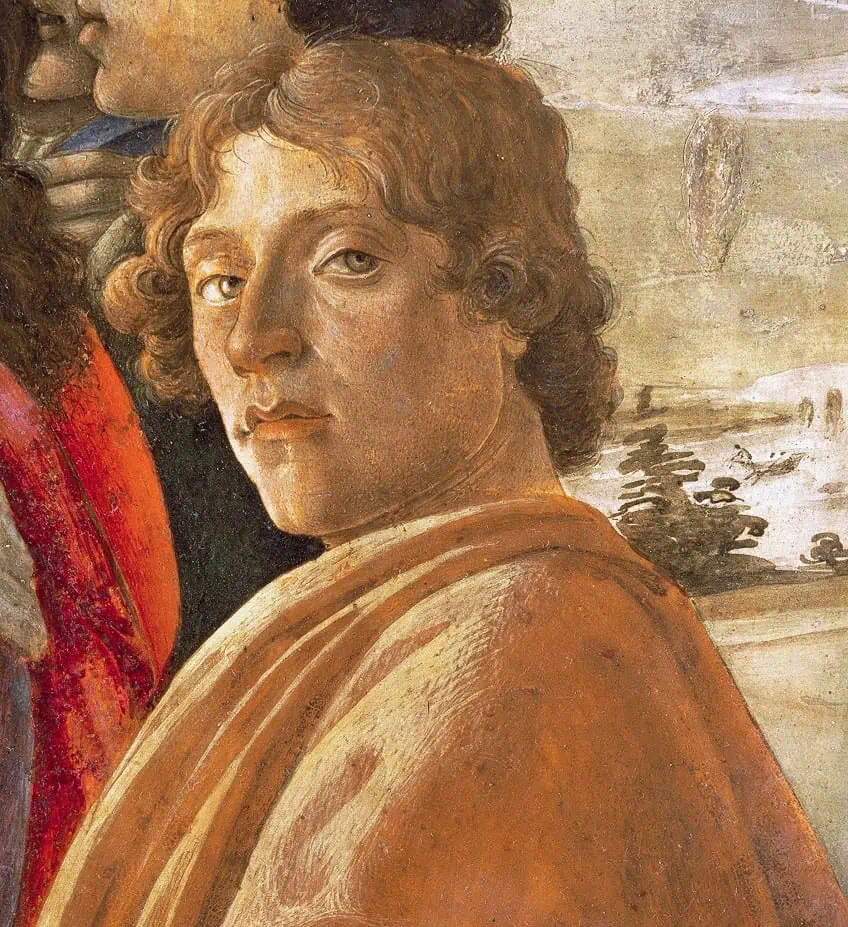
Leonardo da Vinci (1452 – 1519)
| Artist Name | Leonardo di ser Piero da Vinci |
| Date of Birth | 15 April 1452 |
| Date of Death | 2 May 1519 |
| Nationality | Italian |
| Movements, Themes, and Styles | Italian High Renaissance, design, figurative, portraiture, religious art, landscape art, and human anatomy |
| Mediums | Painting, drawing, architecture, sculpture, and science |
| Most Famous Paintings | ● Annunciation (1472 – 1476) ● Lady with an Ermine (1489 – 1491) ● The Last Supper (1492 – 1498) ● Mona Lisa (1503) |
The brilliant multidisciplinary artist and among the top three most famous Italian painters of all time, Leonardo da Vinci represented the height of the Renaissance through his art. Today, Da Vinci’s works easily sell for hundreds of millions of dollars, which may seem ridiculous but the genius artist’s reputation and contribution to the Italian Renaissance were so profound that his paintings speak for themselves.
Leonardo da Vinci was responsible for creating perhaps the most famous Italian artwork, the Mona Lisa (1503), which is housed at the Louvre Museum. He is also recognized as the creator of the world’s most expensive painting, Salvator Mundi (1499 – 1510), which was bought by Mohammed bin Salman.
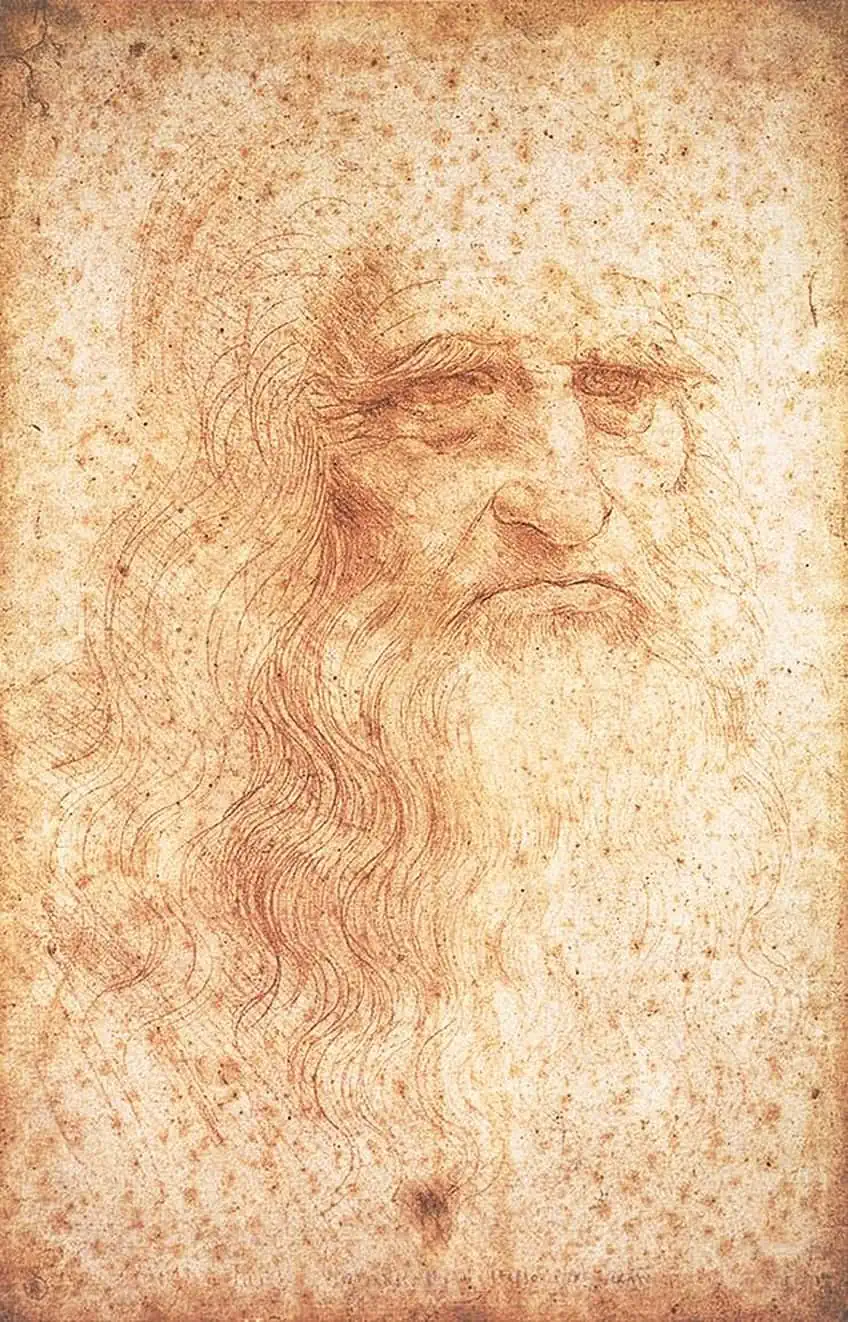
Michelangelo Buonarroti (1475 – 1564)
| Artist Name | Michelangelo di Lodovico Buonarroti Simoni |
| Date of Birth | 6 March 1475 |
| Date of Death | 18 February 1564 |
| Nationality | Italian |
| Movements, Themes, and Styles | Italian High Renaissance, Renaissance, and frescoes |
| Mediums | Painting, architecture, sculpture, and poetry |
| Most Famous Paintings | ● The Sistine Chapel Ceiling (1508 – 1512) ● The Creation of Adam (1510) ● The Last Judgment (1534 – 1541) |
Michelangelo Buonarroti, better known as Michelangelo, was one of the most famous Italian Renaissance artists whose legendary contributions to the Sistine Chapel went on to influence many great painters. Michelangelo was a multi-talented painter who also took a liking to poetry, architecture, and sculpture. Michelangelo was a master Italian painter whose frescoes at the Sistine Chapel were the highlight of his career and featured his second-largest fresco, The Last Judgement (Il Giudizio Universale) (c. 1534 – 1541), which contained over 300 figures portraying the Second Coming of Christ.
Other significant portions of the Sistine Chapel include The Creation of Adam (c. 1510). The Last Judgement was criticized for its original display of nudity, which placed Michelangelo as an artist ahead of his time.
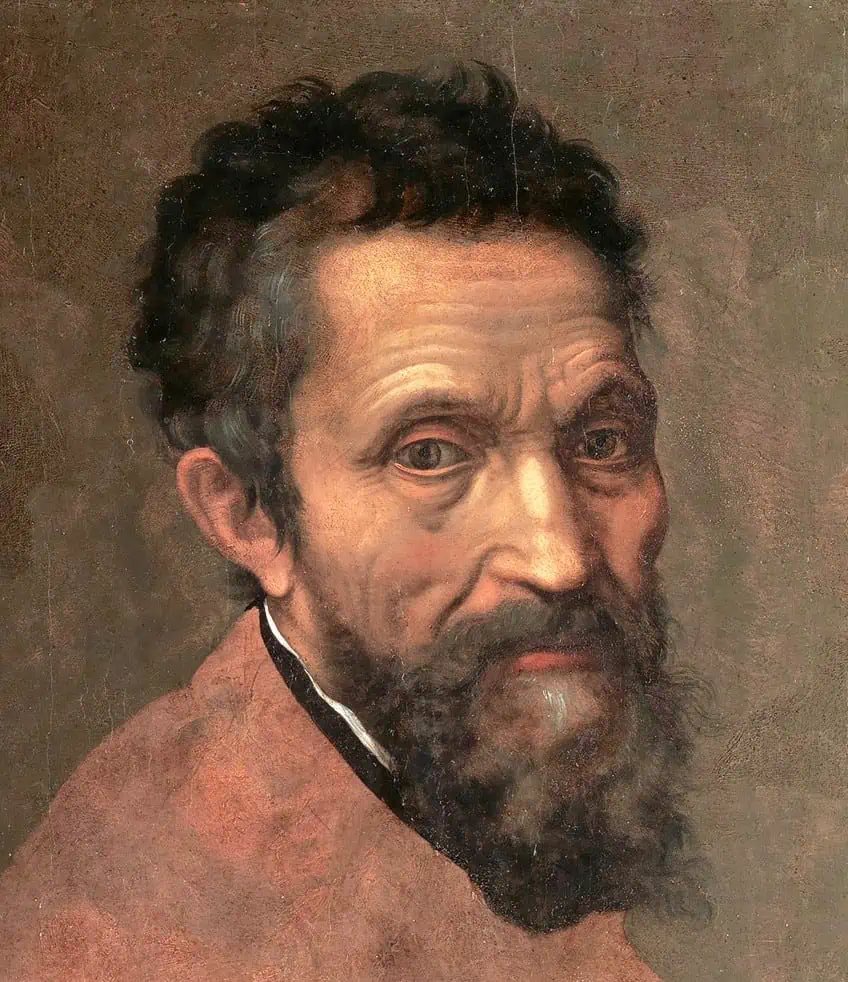
Giorgione (1477 – 1510)
| Artist Name | Giorgio Barbarelli da Castelfranco (also known as Girogione) |
| Date of Birth | c. 1477 |
| Date of Death | 25 October 1510 |
| Nationality | Italian |
| Movements, Themes, and Styles | Italian High Renaissance, Italian Renaissance, and Venetian painting |
| Mediums | Painting |
| Most Famous Paintings | ● Judith (1504) ● Laura (1506) ● The Tempest (1508) ● Sleeping Venus (1510) |
Giorgio Barbarelli da Castelfranco, better known as Giorgione, was one of the Venetian school’s best painters of the High Renaissance. Giorgione succumbed to early death in his thirties and was most famous for the poetic quality of his work. The true meaning of his paintings has not been definitely pinpointed and thus makes this Italian painter one of the most elusive painters in European art history.
Giorgione’s paintings did reflect some of the styles pioneered by the Venetian school, including a linear disegno style and the relationship between the use of color and mood.
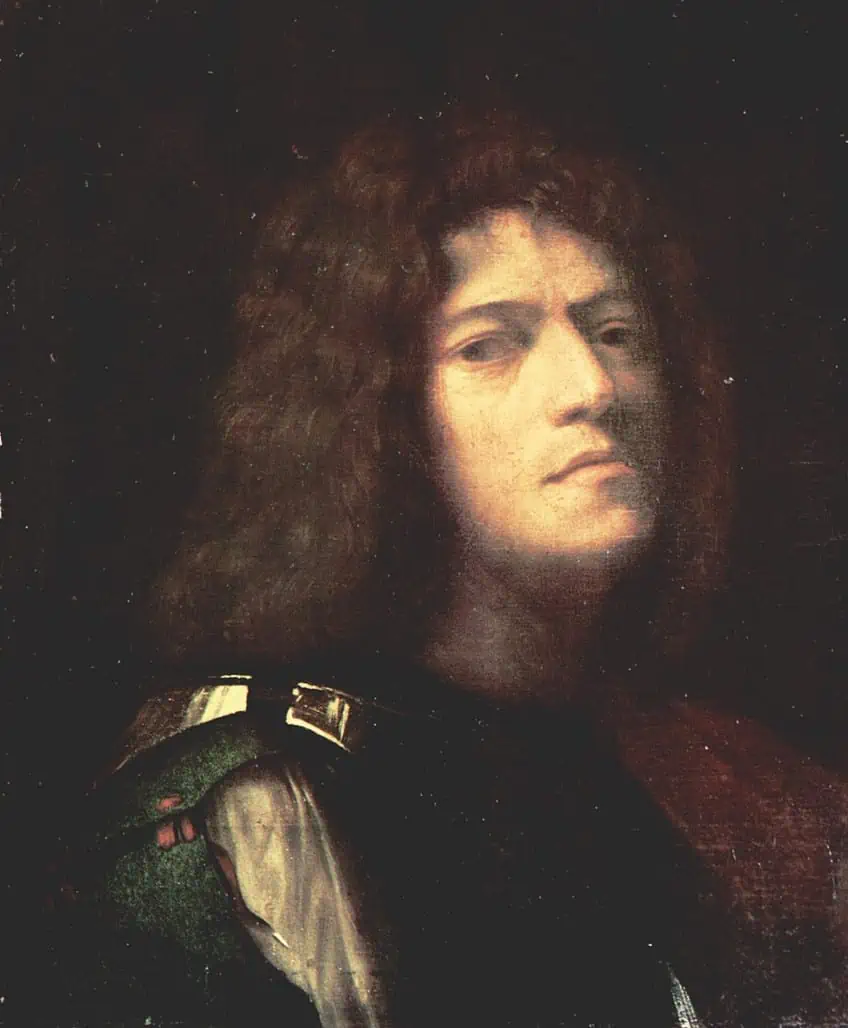
Some of Giorgione’s most famous Italian paintings include Sleeping Venus (1510), which was completed by Titian after Giorgione’s death. Giorgione invested in the use of a delicate painting technique used to create perspective and depict light, called sfumato, which coincided with Da Vinci’s use of it at the time. It is believed that Da Vinci learned such techniques from illuminated manuscripts upon the introduction of oil painting and this was where Giorgione gained inspiration.
Raphael (1483 – 1520)
| Artist Name | Raffaello Sanzio da Urbino (also known as Raphael) |
| Date of Birth | 1483 |
| Date of Death | 6 April 1520 |
| Nationality | Italian |
| Movements, Themes, and Styles | High Renaissance |
| Mediums | Painting |
| Most Famous Paintings | ● The School of Athens (1509 – 1511) ● The Sistine Madonna (1512) ● Transfiguration (1520) ● La Fornarina (1520) |
Raphael was the definition of a child prodigy who, not long after developing his painting skills under his father, surpassed him and took over his workshop at the age of 11! Raphael was also a child of refined taste since one of his favorite artists was Leonardo da Vinci, to whom he dedicated a series of Madonna paintings. Raphael’s contributions to the 15th-century art world only grew in influence and recognition with some of his most famous works being celebrated for clean compositions and a display of human grandeur.
His most famous Italian paintings include Madonna in the Meadow (1505 – 1506) and The Transfiguration (1516 – 1520). Madonna di San Sisto (The Sistine Madonna) (1512) is one painting that is often recognized for its cheeky little cherubs at the bottom of the Madonna.
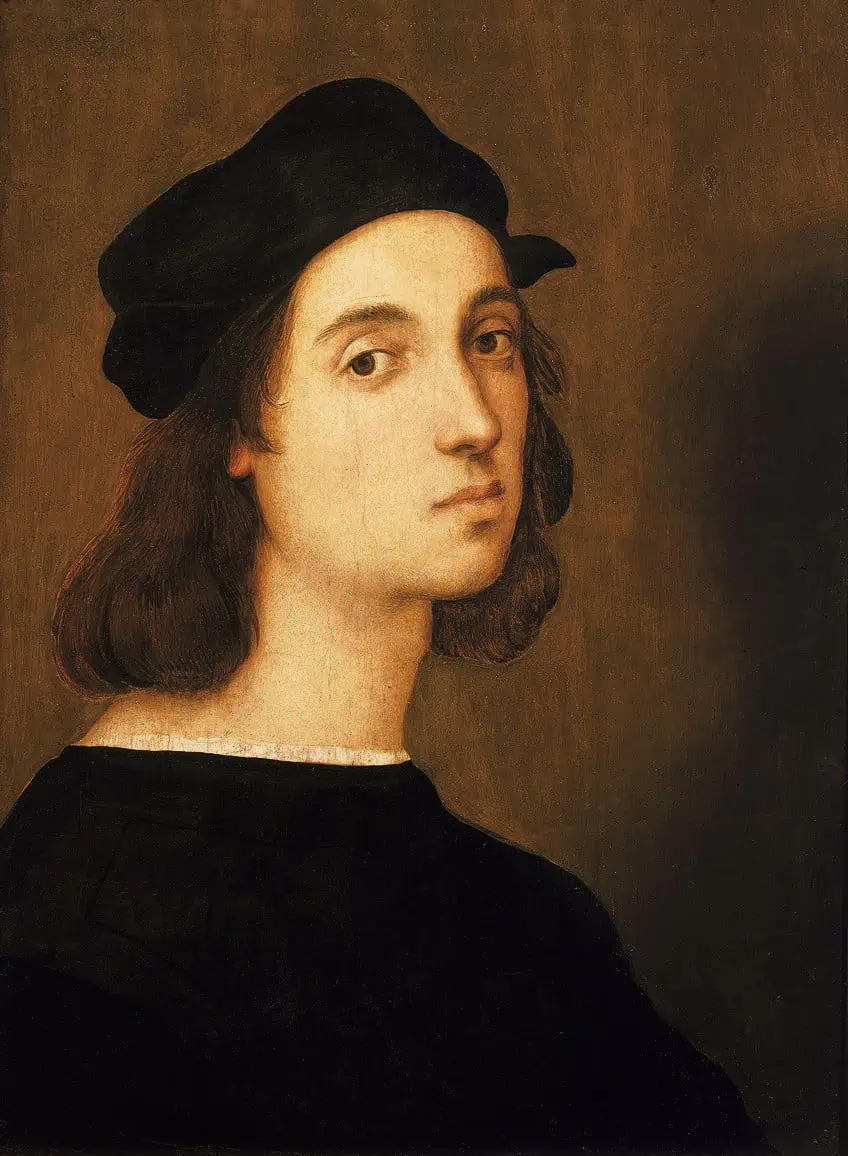
Titian (1488 – 1576)
| Artist Name | Tiziano Vecelli (also known as Titian) |
| Date of Birth | c. 1488/1490 |
| Date of Death | 27 August 1576 |
| Nationality | Italian |
| Movements, Themes, and Styles | Renaissance, Italian High Renaissance, and Italian Renaissance |
| Mediums | Painting |
| Most Famous Paintings | ● Sacred and Profane Love (1514) ● Assumption of the Virgin (1515 – 1518) ● Venus of Urbino (1534) ● Danaë and the Shower of Gold (1553 – 1554) ● Pieta (1575) |
Tiziano Vecelli, better recognized by his artist name, Titian, was among the greatest Italian painters of the High Renaissance. Titian’s oeuvre covered religious, mythological, and pastoral subjects across portraiture, landscape art, and the occasional altarpiece. Titian is considered to be one of the most influential artists of the 15th and 16th centuries whose works exhibited his mastery over the integration of luminous colors and is credited with being one of the leading artists of the Venetian school.
From the young age of 10, Titian was sent away with his brother to learn the art of painting and trained under the era’s best painter, Giovani Bellini.
A close-up of Titian’s Self-Portrait (c. 1562); Titian, Public domain, via Wikimedia Commons
One of Titian’s most dynamic paintings includes Bacchus and Ariadne (1522), which was created within a year. The painting was a commissioned piece by the Duke of Ferrara, Alfonso I d’Este, and depicts a famous narrative from mythology relating to Princess Ariadne who falls in love with Theseus but is later abandoned by the Athenian hero.
Caravaggio (1571 – 1610)
| Artist Name | Michelangelo Merisi da Caravaggio |
| Date of Birth | 29 September 1571 |
| Date of Death | 18 July 1610 |
| Nationality | Italian |
| Movements, Themes, and Styles | Renaissance, Baroque, still-life, portraiture, and chiaroscuro |
| Mediums | Painting |
| Most Famous Paintings | ● Boy with a Basket of Fruit (1593 – 1594) ● Medusa (c. 1597) ● Judith Beheading Holofernes (1599 – 1602) ● The Denial of Saint Peter (1610) |
Caravaggio was a Milan-based Italian painter with a rather aggressive tendency that later resulted in the murder of a man. Caravaggio was an eccentric painter who is still regarded as one of the most famous Italian painters, primarily for his contribution to the genre of Baroque painting.
Caravaggio led the Baroque movement by accentuating his paintings using high contrasts of light and darkness encapsulated by a painting technique called the chiaroscuro method.
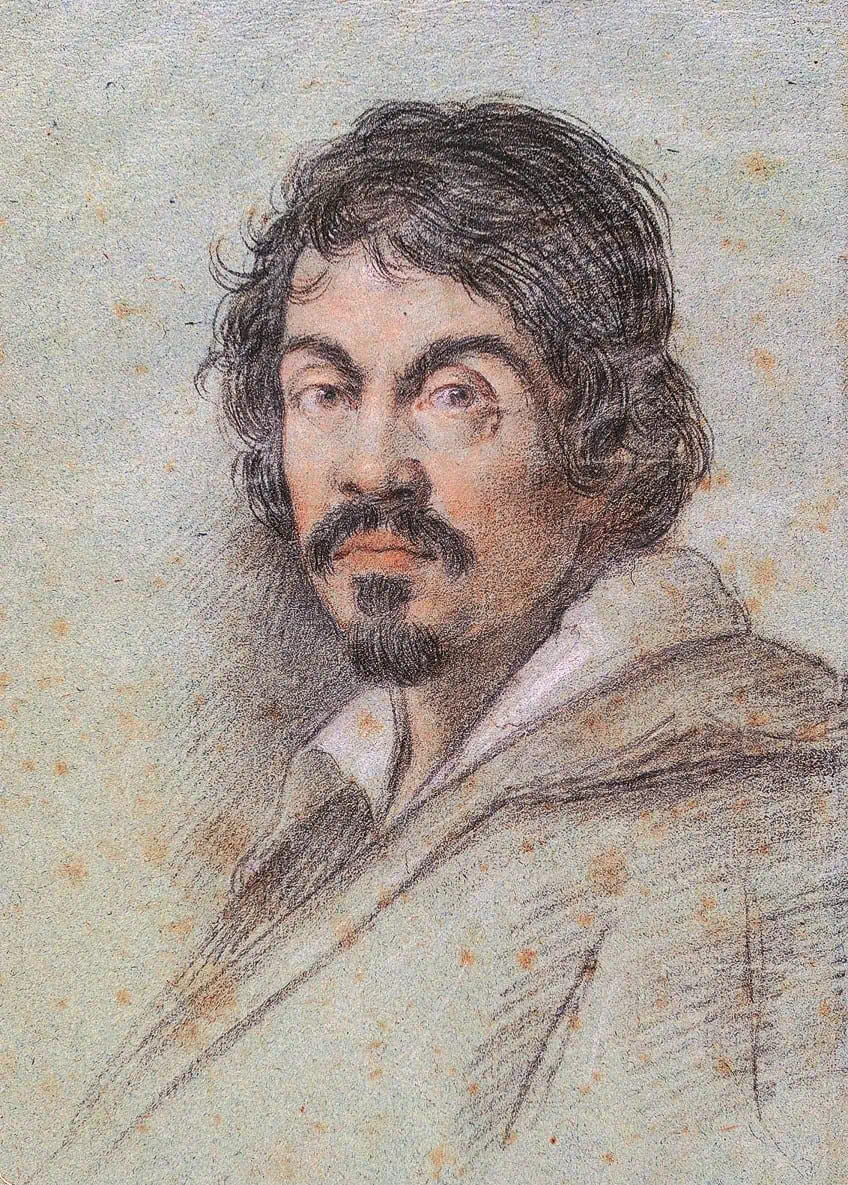
The artist’s most famous paintings include Judith Beheading Holofernes (c. 1598 – 1602) and Medusa (1595 – 1598). Medusa is one of the most famous Italian Renaissance artworks from the Baroque period that was once part of the Persian armor of a mannequin and is the perfect demonstration of Caravaggio’s affinity toward the expression of intense human emotions to highlight the sublime moment between life and death.
Artemisia Gentileschi (1593 – 1656)
| Artist Name | Artemisia Gentileschi (also known as Artemisia Lomi) |
| Date of Birth | 8 July 1593 |
| Date of Death | c. 1656 |
| Nationality | Italian |
| Movements, Themes, and Styles | Baroque, Caravaggio, allegory, myths, and biblical narratives |
| Mediums | Painting, and drawing |
| Most Famous Paintings | ● Salome with the Head of Saint John the Baptist (c. 1610 – 1615) ● Venus and Cupid (c. 1625 – 1630) ● Lot and His Daughters (1635 – 1638) ● Self-Portrait as the Allegory of Painting (1638 – 1639) |
Artemisia Gentileschi was one of the most prolific Italian painters of her time, who also produced some of the most intriguing allegorical and mythological Baroque artworks of the Italian Renaissance. Gentileschi, also known as Artemisia Lomi, was a master painter who thrived despite the difficulties that women in art had to undergo during the 16th and 17th centuries. She was also the first femme member of the Accademia di Arte del Disegno in Florence.
Gentileschi was inspired by masters like Caravaggio who had a talent for Baroque painting, which Gentileschi uniquely applied in her own way to elevate the depiction of female figures. Gentileschi thus represents one of the first examples of the femme gaze in Italian Renaissance painting.
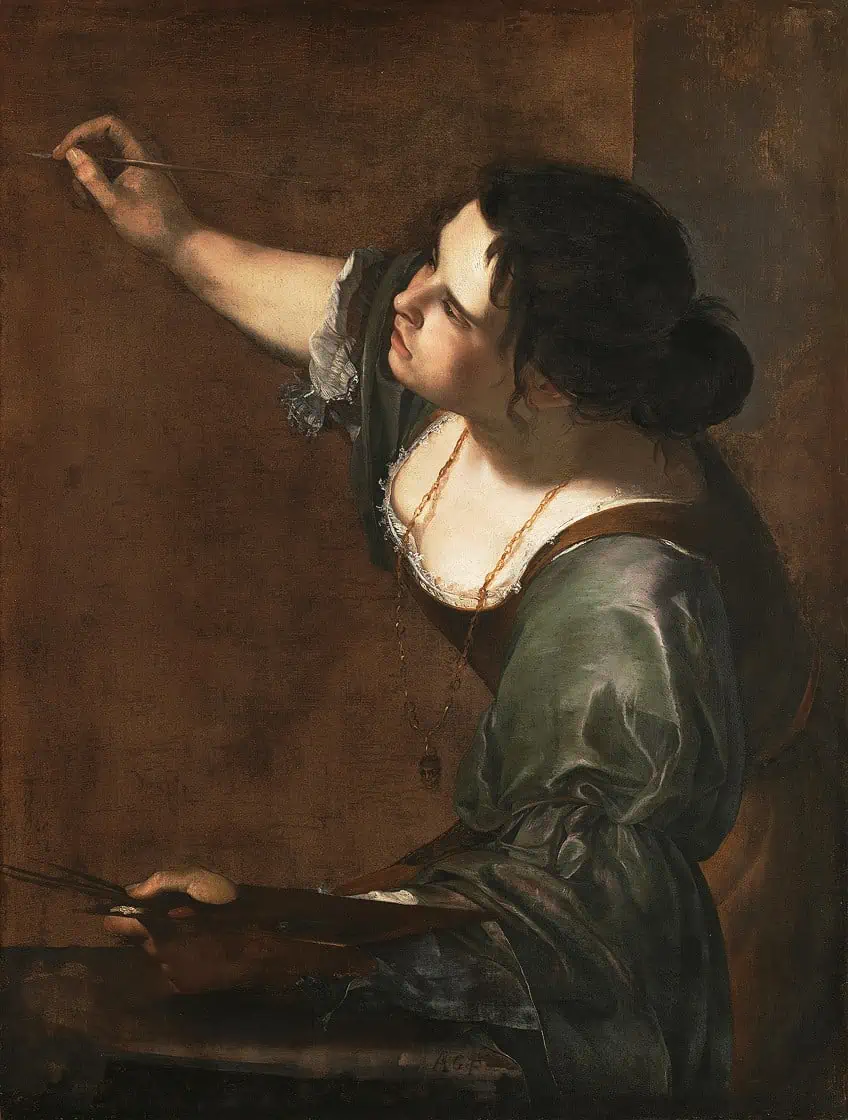
Elisabetta Sirani (1638 – 1665)
| Artist Name | Elisabetta Sirani |
| Date of Birth | 8 January 1638 |
| Date of Death | 28 August 1665 |
| Nationality | Italian |
| Movements, Themes, and Styles | Baroque, and Italian Renaissance |
| Mediums | Painting, printmaking, and drawing |
| Most Famous Paintings | ● Allegory of Music (c. 1659) ● Timoclea Kills the Captain of Alexander the Great (1659) ● Virgin and Child (1663) ● Portrait of Vincenzo Ferdinando Ranuzzi as Amor (1663) ● Portia Wounding Her Thigh (1664) |
Elisabetta Sirani was a leading Italian Baroque artist of her time and master printmaker whose impact on the Italian art space was immense. Sirani pioneered the founding of an academy aimed at encouraging women to practice art as a formal career but, unfortunately, died mysteriously at the young age of 27 and did not complete her oeuvre. Sirani was based in Bologna where she grew to become the city’s best painter.
Some of her most famous Italian Renaissance artworks include Timoclea Kills the Captain of Alexander the Great (1659), which was a demonstration of her fighting spirit toward men who undermined the power of women and the Allegory of Music (c. 1659).
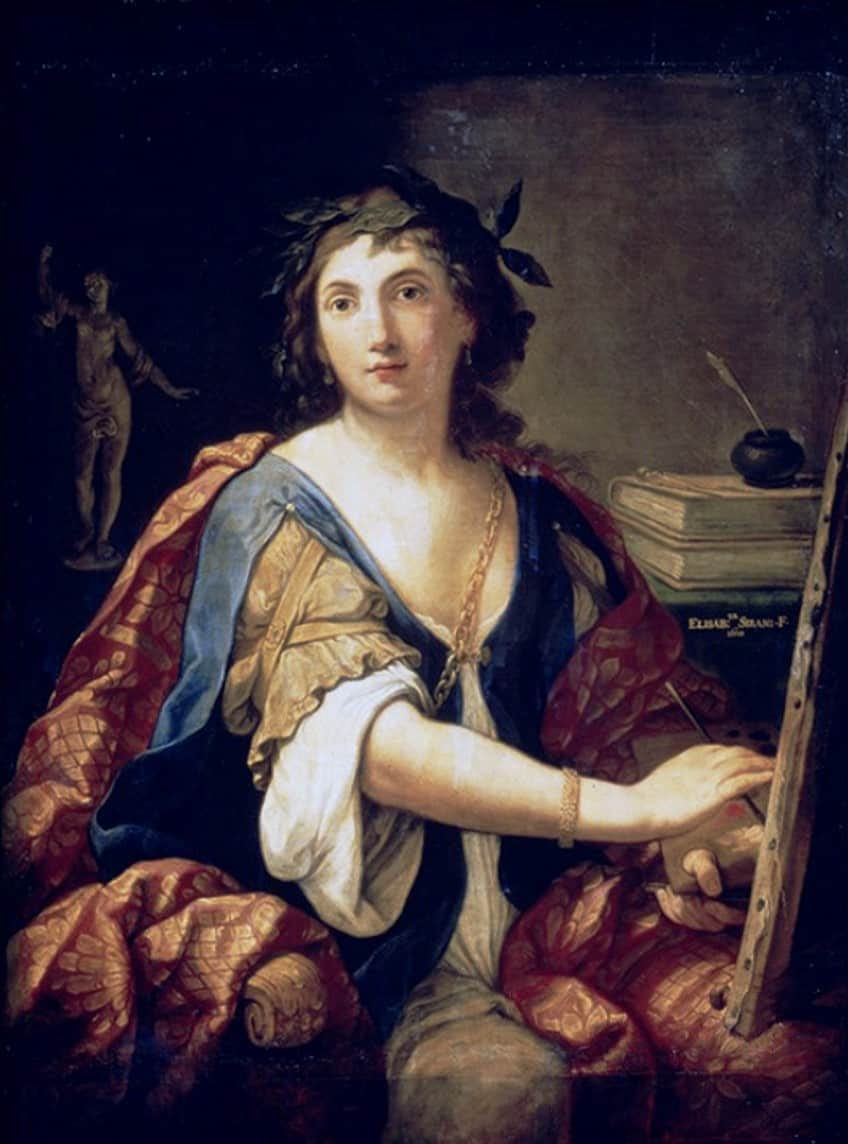
Andrea Pozzo (1642 – 1709)
| Artist Name | Andrea Pozzo |
| Date of Birth | 30 November 1642 |
| Date of Death | 31 August 1709 |
| Nationality | Italian |
| Movements, Themes, and Styles | Baroque, and Italian Renaissance |
| Mediums | Painting, and drawing |
| Most Famous Paintings | ● Apotheosis of Hercules in Liechtenstein palace (1675) ● Apotheosis of Saint Ignatius (1685 – 1694) ● Flight into Egypt (c. 17th century) |
Andrea Pozzo was a well-known pioneer of Baroque painting as well as an Italian Jesuit Brother and art theoretician. Pozzo was incredibly skilled at painting massive frescoes with many of his works showcasing his hand at architecture as well as creating an illusion of a three-dimensional space. As such, Pozzo was one of the most prolific Baroque-era painters who contributed to the designs and artistic activities of many Jesuit Order-related projects.
Some of his most famous works include frescoes on the nave ceiling of the Roman church of Sant’Ignazio and his decorative works at the San Francis Xavier church.
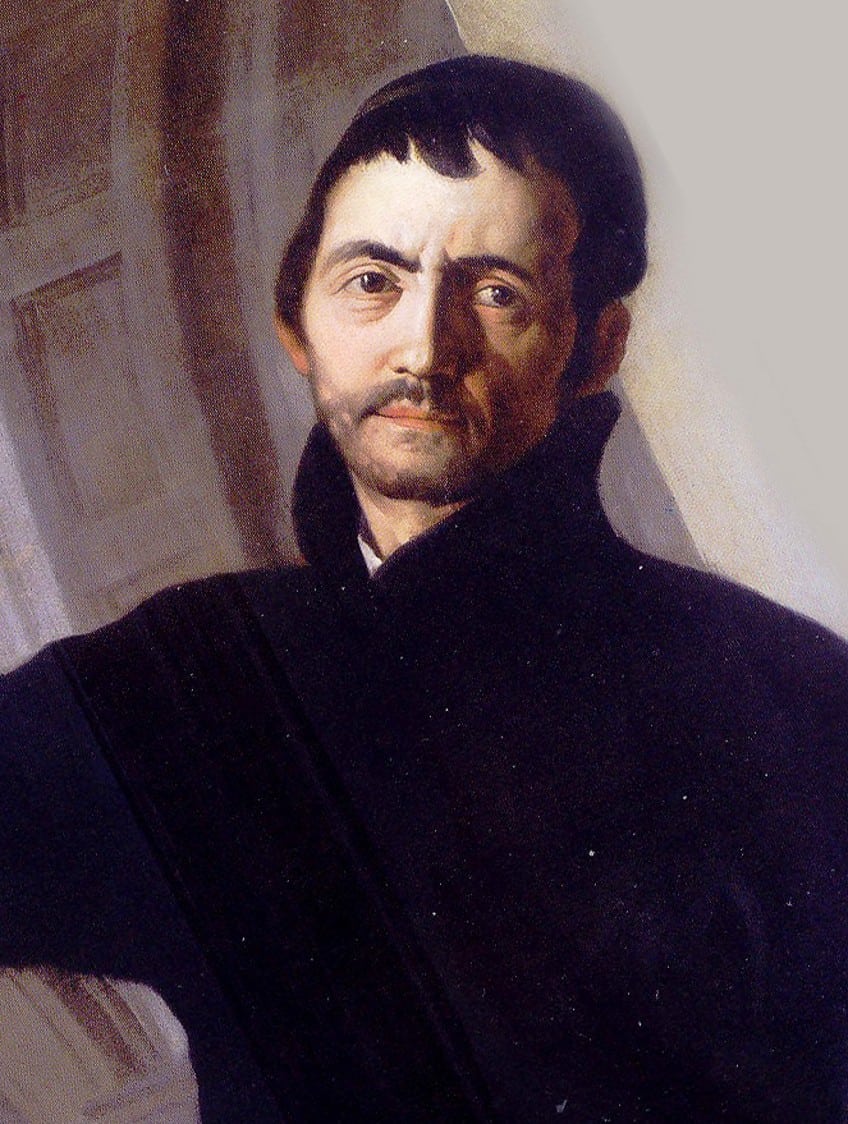
From artists of the late Middle Ages to the High Renaissance, these famous Italian artists demonstrated their best hand at painting and piloted some of the most well-known painting techniques in European art history. The development of painting through medium, technique, and experimentation with popular subjects was evident in the works of these master Italian artists.
Take a look at our Italian painters webstory here!
Frequently Asked Questions
Who Was the Most Famous Italian Painter in the Middle Ages?
The most famous Italian painter in the Middle Ages was Giotto di Bondone, who was an artist and architect from Florence that thrived in his artistic career during the late Middle Ages. His artwork style is categorized under the proto-Renaissance and Gothic eras.
Who Were the Most Famous Italian Painters of the Renaissance?
The most famous Italian painters of the Renaissance were Leonardo da Vinci, Raphael, and Michelangelo, all of whom are credited with holding a significant influence over the broader art context of the period.
Who Were the Most Famous Italian Painters of the Venetian High Renaissance?
The most famous Italian painters of the Venetian High Renaissance were Titian, Giovanni Bellini, and Giorgione, all of whom made significant impressions on the art styles of Northern Italy.
Jordan Anthony is a Cape Town-based film photographer, curator, and arts writer. She holds a Bachelor of Art in Fine Arts from the University of the Witwatersrand, Johannesburg, where she explored themes like healing, identity, dreams, and intuitive creation in her Contemporary art practice. Jordan has collaborated with various local art institutions, including the KZNSA Gallery in Durban, the Turbine Art Fair, and the Wits Art Museum. Her photography focuses on abstract color manipulations, portraiture, candid shots, and urban landscapes. She’s intrigued by philosophy, memory, and esotericism, drawing inspiration from Surrealism, Fluxus, and ancient civilizations, as well as childhood influences and found objects. Jordan is working for artfilemagazine since 2022 and writes blog posts about art history and photography.
Learn more about Jordan Anthony and about us.
Cite this Article
Jordan, Anthony, “Famous Italian Painters – The Top Italian Artists to Know.” artfilemagazine – Your Online Art Source. April 5, 2023. URL: https://artfilemagazine.com/famous-italian-painters/
Anthony, J. (2023, 5 April). Famous Italian Painters – The Top Italian Artists to Know. artfilemagazine – Your Online Art Source. https://artfilemagazine.com/famous-italian-painters/
Anthony, Jordan. “Famous Italian Painters – The Top Italian Artists to Know.” artfilemagazine – Your Online Art Source, April 5, 2023. https://artfilemagazine.com/famous-italian-painters/.


